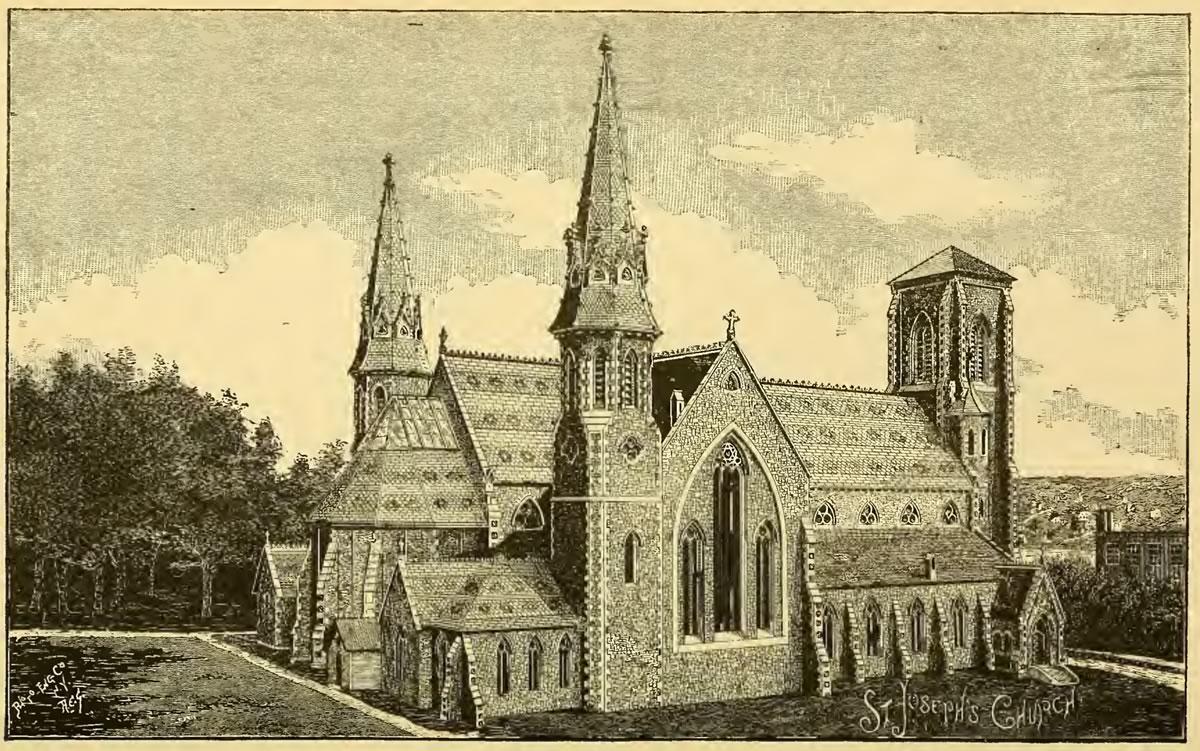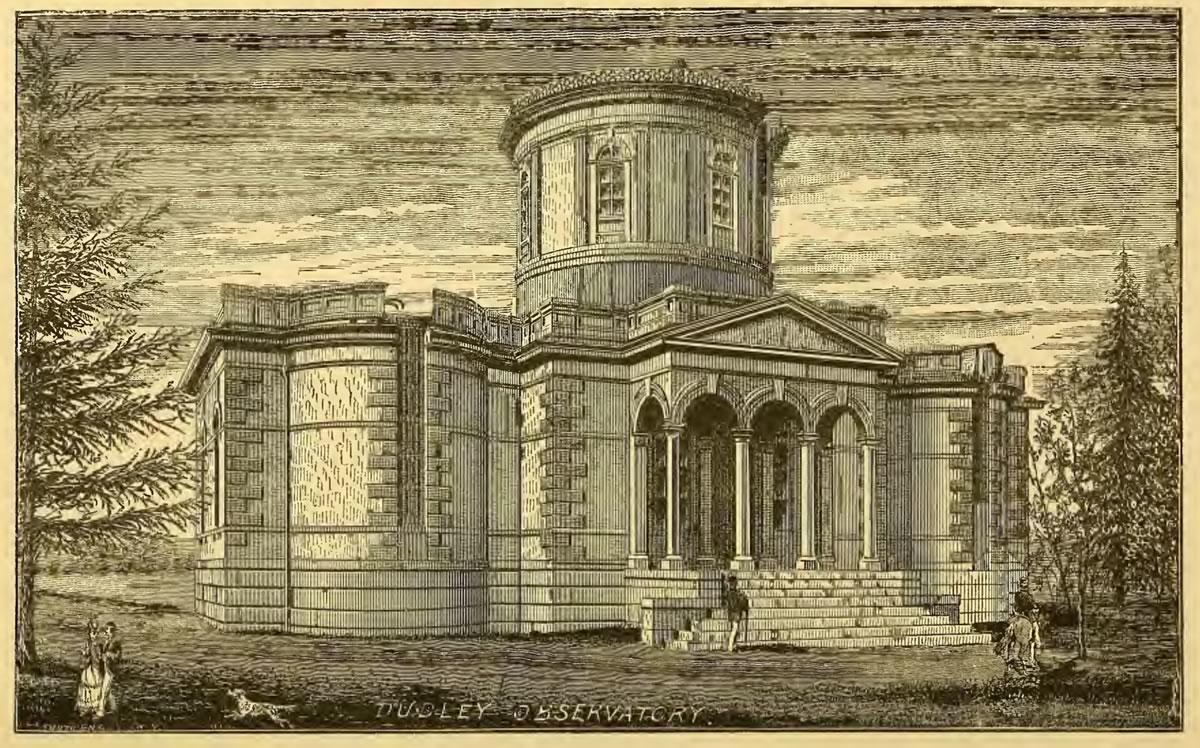Illustrations of Albany's history

City Hall once had a jail attached to it.
Earlier this week we posted an old illustration of the Farmers and Mechanics Bank building in downtown Albany that showed how the beautiful, but oddly narrow building, was once part of two intersecting rows of buildings.
That illustration was the 1884 The History of The City of Albany, New York by Arthur James Weise. (Tip o' the hat, Albany Archives.) And it includes a bunch of these sorts of illustrations.
So we thought it'd be fun/interesting to pull out a few, along with some blurbs associated with them. See blow.
Also: If you're interested in local history, the book itself is worth skimming through, at the very least. There's a lot of time spent on the history of Albany before the United States. (Albany as a city predates the country by about a century.) And sure there's a lot of discussion about beavers (because Albany wouldn't be here without them), but it also highlights how Native Americans played a large role in the city's history.
OK, on to those illustrations...
The Simeon DeWitt map
This 1790 Simeon De Witt map isn't unique to the Weise book -- you might have even seen it before -- but it's in there and you can really see the details up close. (As with all these images, you can click on them for a larger view.)
One of the things we like about the De Witt map is the way you can see street intersections that still exist today -- such as State and Pearl. Also: It highlights how prominent streams and their ravines were in the landscape of the city. Many of the streams have since between covered over, but that topography still exerts itself today.
Van Rensselaer Manor
"The patroon of Rensselaerswyck, Stephen van Rensselaer, in 1765, completed the building of his attractive and commodious manor house. The date of its erection in large iron numerals ornament the stately edifice still standing a short distance north of Thacher Street, in the north part of the city. Almost opposite it, on the west side of Broadway, is the one-story, brick office of the estate, containing a large number of manorial papers, maps, and account-books, some of which are more than two hundred and fifty years old." [pdf p. 372]
That location is in what's now called the Warehouse District, near Tivoli Street and Broadway.
See also:
+ Photos of the home and a few bits about its odd fate.
+ Thomas Cole's painting of the home, which is in the collection of the Albany Institute.
City Hall
The illustration shows the old jail that was once connected to the back of City Hall.
"The corner-stone of the new building was laid on the thirteenth of October, 1881. The walls are of Bragville granite, trimmed with East Long-Meadow brown stone, both taken from quarries near Springfield, Massachusetts. The building, including the tower, has a frontage of one hundred and twenty feet and a depth of one hundred and twenty-five feet. The tower is two hundred and ten feet high. The building and its furniture cost $325,000. The plan of the city-hall was designed by H.H.Richardson, architect, of Boston. The jail, immediately east of the city-hall on the north side of Maiden Lane, was erected in 1852. Criminals were confined in it for the first time on the second of June, 1853." [pdf p. 548]
The building in Academy Park
Weise details some of the history of the founding of the Albany Academy and the construction of its building in what's today called Academy Park, across from the Capitol and City Hall. Philip S. van Rensselaer laid the cornerstone on July 29, 1815.
"The building is on the northwest corner of the attractive public square, immediately north of the grounds in front of the new capitol. It is constructed of Newark free-stone; the main building, which is two stories high, above the basement story, is seventy by eighty feet, and the wings, thirty by forty-five feet. About ninety thousand dollars were expended in the erection and completion of the academy." [pdf p. 521]
The building now houses the Albany city school district.
Old Albany High School
The first Albany High School building was on Eagle Street, roughly where the county court house is now.
"During the school year of 1883-1884 two hundred and forty-one teachers, twenty-two men and two hundred and nineteen women, were employed to instruct the thirteen thousand six hundred and eighteen children attending the schools in the twenty-four school-buildings in the city. Of this number of scholars, six hundred and nineteen were pupils in the high-school." [pdf p. 575]
See also: Photos of the building, which was beautiful.
Albany Medical College
"Dr. Alden March of Massachusetts began in 1821 a course of lectures on anatomy with dissections to a class of fourteen students in a building on Montgomery street, north of Columbia street. In 1830 he delivered a public lecture on the 'propriety of establishing a medical college and hospital in Albany.' In 1835 Dr. James H. Armsby, who had attended the lectures of Dr. March, became a teacher of anatomy in the school. In May, 1838, the Lancaster School building, on the southwest corner of Lancaster and Eagle streets, was leased to the trustees of the college." [pdf. p. 559]
Lancaster and Eagle is right about at the eastern wall of the ESP.
St Joseph's in Arbor Hill

"The attractive architecture of St. Joseph's Roman Catholic church, on the corner of Ten Broeck and Second streets, makes the building one of the most ad- mired in the city. Five years were given to its erection. The edifice represents the Benedictine architecture of the thirteenth century. The building was dedicated on the thirteenth of May, 1860." [pdf p. 478]
(The spire that now adorns the front tower of the building was added in the early 1900s.)
The first Dudley Observtory
"On the following day the commemorative exercises of the inauguration of the Dudley Observatory, erected in 1853 and 1854 on a plat of high ground about three-fourths of a mile northeast of the capitol, took place beneath a large awning in Academy Square. Edward Everett of Boston delivered the dedicatory ad- dress. Mrs. Blandina Dudley, as a tribute to the memory of her husband, Charles E. Dudley, gave first a contribution of twelve thousand dollars for the erection of the observatory building. To honor this tribute the trustees gave the institution the name of the Dudley Observatory.This contribution and her subsequent gifts to the institution were in all one hundred and five thousand dollars. The donations of other contributors aggregate about one hundred thousand dollars." [pdf p. 567]
There'd later be a second Dudley Observatory along New Scotland Ave.
The org still exists -- it's at miSci in Schenectady now, and has a new observatory.
Washington Park
"One of the most attractive and enjoyable parts of the city is Washington Park, about three-fourths of a mile west of the capitol. By an enactment of the legislature on the fifth of May, 1869, the land known as the burial ground property, the penitentiary grounds and the almshouse farm were set apart and devoted to the purposes of a public park to be named 'the Washington Park of the city of Albany.' The title of the property was vested in a board of trustees, who were authorized to have the grounds laid out and improved for the uses of a public park. In July, 1870, the work was begun. In 1875 the bridge across the lake and the houses on its banks were erected. The basin of the lake is sixteen hundred feet long with an average width of one hundred and forty feet. The park embraces about eighty-one acres of land, decorated with large umbrageous trees, pretty parterres of beautiful flowers, extensive lawns, numerous walks and long drives. Henry L. King, deceased, bequeathed twenty thousand dollars to erect a handsome fountain on a suitable site in the park." [pdf p. 576]
Say Something!
We'd really like you to take part in the conversation here at All Over Albany. But we do have a few rules here. Don't worry, they're easy. The first: be kind. The second: treat everyone else with the same respect you'd like to see in return. Cool? Great, post away. Comments are moderated so it might take a little while for your comment to show up. Thanks for being patient.








Comments
nice pictures.
... said Lana Romano on Jul 26, 2018 at 6:33 PM | link
I enjoy the historic maps and photos you share, which remind me how important Albany was in the development of this country and how much our region has lost as we let that history go. In clicking through the links about Van Rensselaer Hall, I learned that one of its rooms is at the Metropolitan Museum of Art. Here's a video that describes its significance https://www.pbs.org/video/nyc-arts-van-rensselaer-hall-metropolitan-museum-art-nyc-arts/.
... said karen on Jul 27, 2018 at 11:20 AM | link
I don't have to click on the Simeon De Witt map - I have a print of it on my living room wall!
So does anyone know what happened to the old jail attached to City Hall??
... said Ellen on Jul 27, 2018 at 5:11 PM | link
I don't know exactly when it was torn down, but here is a picture. It seems the elaborate stone bridge was not built:
https://flic.kr/p/oya3sM
... said Eric Scheirer Stott on Jul 28, 2018 at 5:07 PM | link